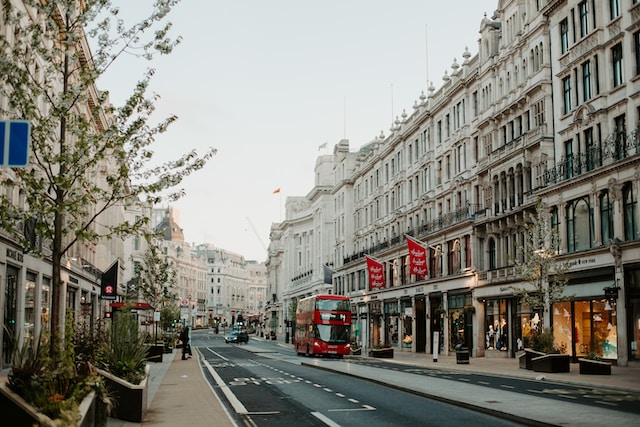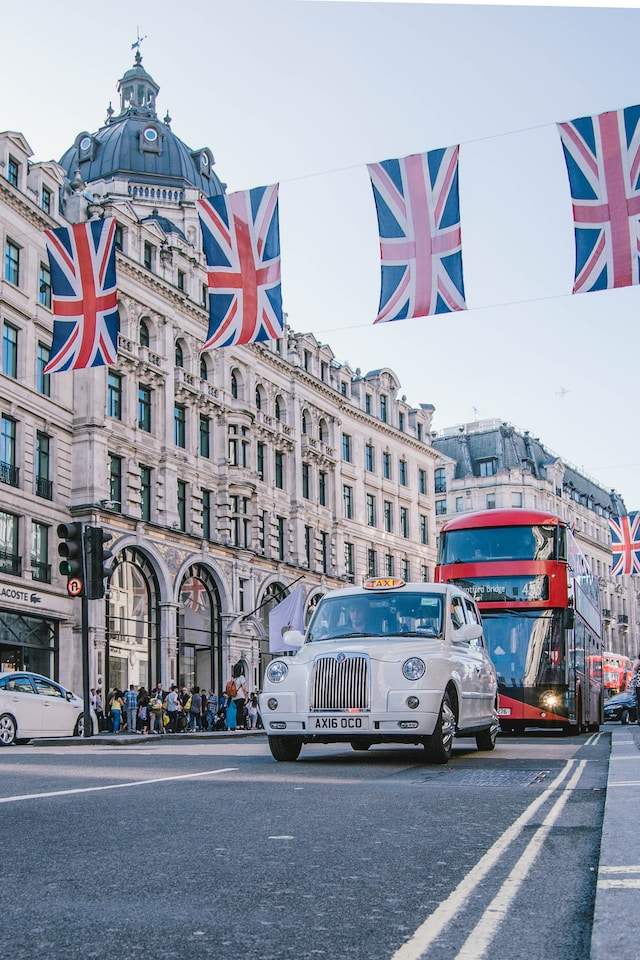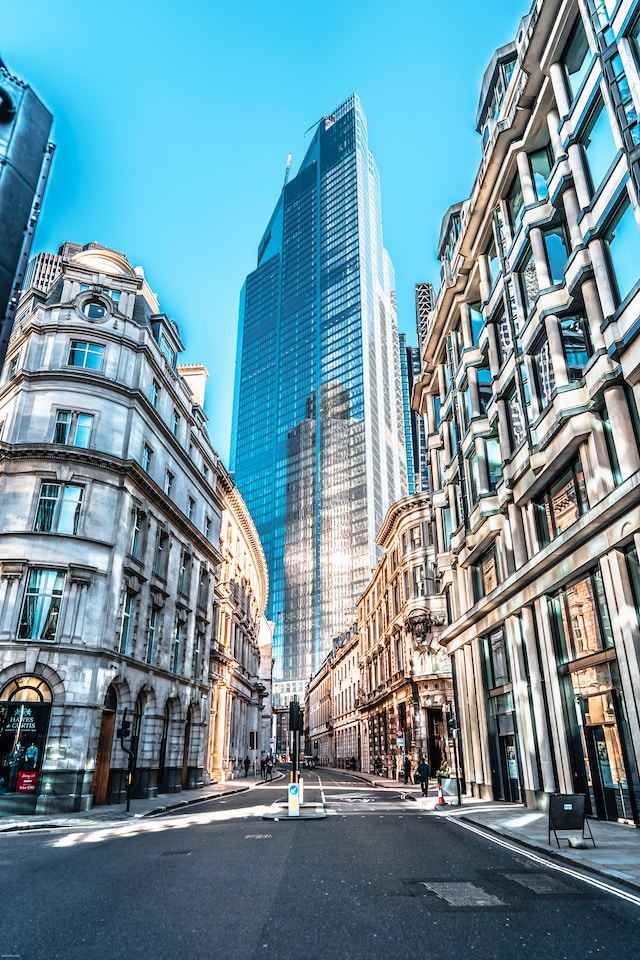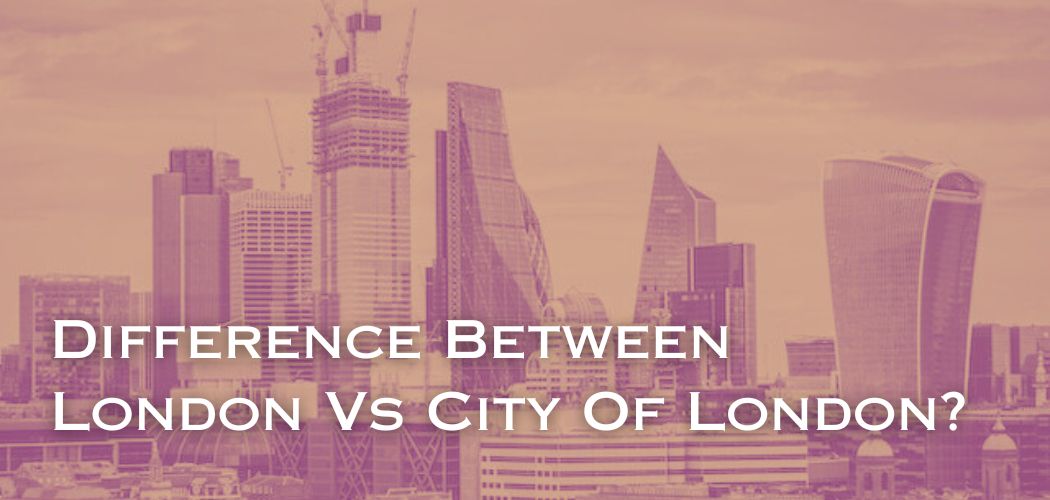Anyone visiting the capital of the UK might be perplexed to learn that the City of London and London are two different places.
Greater London and the City of London, also referred to as the City or the Square Mile, are the two main areas of the city.
Here is all the information you need regarding the difference between London and the City of London.
Contents
- 1 What Is The City Of London, And How Does It Differ From London?
- 2 Is The City Of London A Separate Entity From London?
- 3 How Did The Boundaries Of The City Of London Remain Constant For Centuries?
- 4 What Is The Governance Structure Of London And The City Of London?
- 5 How Does The City Of London Operate As A Global Financial Hub?
- 6 What Role Does London Play In Terms Of Culture And Tourism?
- 7 Are There Any Specific Cultural Differences Between London And The City Of London?
- 8 How Do The Mayors Of London And The City Of London Vary From One Another?
- 9 How Are The Demographics Of London And The City Of London Different?
- 10 What Are The Primary Transportation Differences Between London And The City Of London?
- 11 How Are Housing Costs And Property Values Different Between London And The City Of London?
- 12 Conclusion
What Is The City Of London, And How Does It Differ From London?
London:
It is one of the most amazing places on earth. Greater London encompasses more than just the UK’s capital.
Additionally, it has a population of 8.5 million people, including the City of London. Now, Greater London Authority is the name of the separate government in charge of London.
The GLA is located at City Hall. It unifies 32 wards and has an absolute area of 607 square miles.
The Greater London Assembly, however, has a distinct mayor. Greater London’s current mayor is Sadiq Khan. Most people choose to stay in London.
City of London:
Londinium, a Roman settlement, is where the city or the Square Miles region is located. This community was established on the northern bank of the River Thames some 2,000 years ago.
Later, it expanded inside its walls by one square mile. Londoners still affectionately refer to the city as “the Square Mile” despite it only being two square miles in size.
Many differences are immediately apparent in the city’s roadways, buildings, and wall colors.
It reaches Chancery Lane in the west and Liverpool Street in the east as it flows north from Temple and the Tower of London along the Thames.
The city also has its own mayor and government. Even though it is a part of the GLA, London still has its own Lord Mayor, Court of Aldermen, and Court of Common Council.
The London mayor, though, uses a fundamentally stronger political power. Another important aspect is that the city is home to the Bank of England.
It is referred to as the center of London because of the Bank of England.
Is The City Of London A Separate Entity From London?
The City of London is certainly a separate entity from London as it greatly differs from the former.

It is considered to be a “city” in and of itself, with a Lord Mayor and its own legislative body called the “City of London Corporation.”
Despite being a part of Greater London, the City has its own set of laws and acts as a separate local authority.
How Did The Boundaries Of The City Of London Remain Constant For Centuries?
Since medieval times, the City of London’s limits have remained relatively constant. Various historical and political aspects might be ascribed to this continuity.
King John awarded the City special status and rights in the 12th century. These advantages enabled it to self-govern and remain relatively independent of the monarch’s reign.
Which is why the City of London has been able to keep its distinct boundaries and distinct governing system throughout the years.
What Is The Governance Structure Of London And The City Of London?
London:
The Greater London Authority (GLA), a regional government organization founded in 2000, is responsible for overseeing Greater London.
The Mayor of London and the London Assembly are the two main parts of the GLA. The Mayor of London is in charge of many duties, including planning, policing, housing, and transportation.
On the other hand, the London Assembly serves as an oversight body that holds the Mayor and the GLA accountable.
City of London:
The City of London has a different governance system from the Greater London Authority. It functions according to a special framework called the “City Corporation” or the “Corporation of London.”
The Lord Mayor, the Court of Aldermen, and the Court of Common Council are in charge of the City Corporation.
The Lord Mayor serves in a ceremonial capacity, unlike the Mayor of London, but the City Corporation plays a vital role in advancing the City’s interests, particularly in the financial industry.
How Does The City Of London Operate As A Global Financial Hub?
The City of London is well known around the world as a significant global financial hub.
Numerous banks, insurance businesses, financial institutions, and investment organizations have their corporate headquarters there.

The City also houses the London Stock Exchange, one of the biggest and oldest stock markets in the world.
The medieval period, when it served as a commercial center, is when its historical significance as a trading hub first emerged.
What Role Does London Play In Terms Of Culture And Tourism?
London has a huge cultural impact and is renowned for its museums, plays, and other cultural institutions.
The West End theater district, Buckingham Palace, the British Museum, and the Tower Bridge are just a few of the city’s famous icons.
It also offers a wide variety of international cuisines, distinct neighborhoods, and a rich history for visitors to discover.
Are There Any Specific Cultural Differences Between London And The City Of London?
The City of London has a distinctive fusion of history and modernity, even though it is a part of the greater London cultural landscape.
Being a financial district, it is generally busier on weekdays and has a higher percentage of office employees among inhabitants.
In contrast, other regions of London with residential areas, entertainment places, and bustling nightlife offer a more varied cultural experience.
How Do The Mayors Of London And The City Of London Vary From One Another?
As a member of the GLA, the Mayor of London has a strategic and managerial role, concentrating on problems that impact all of Greater London.
As previously indicated, a citywide vote is used to directly elect the Mayor of London.

The Lord Mayor of the City of London, in contrast, holds a ceremonial office and is not chosen by the general public.
Instead, the job is customarily given to one of the City’s aldermen, who are chosen by the “freemen” who live there.
It is the Lord Mayor’s responsibility to represent the City internationally and to further its commercial and cultural interests.
How Are The Demographics Of London And The City Of London Different?
London:
London is a huge metropolis with a diversified population that comes from different nationalities, cultures, and ethnic groups.
The majority of the population lives in cities, and a variety of young professionals, families, students, and immigrants add to the city’s vibrant flavor.
City of London:
Compared to the rest of London, the City of London has a smaller residential population because it is a small financial district.
The professionals in the banking and business sectors make up the majority of its population.
Due to commuters going into the city for work, it is much busier during the weekdays than it is on the weekends when many companies are closed.
What Are The Primary Transportation Differences Between London And The City Of London?
London:
Greater London has an extensive and well-connected transportation system that includes buses, trains, the famous London Underground (Tube), trams, and taxis.
It is handy for locals and visitors to travel thanks to this transit system, which makes it simple to access different regions of the city.
City of London:
Because of its small size, the City of London is quite walkable, and many of its major tourist attractions and financial institutions are close to one another.
Although the City is served by the Tube and buses, due to its compact size, walking is a preferred form of transit for locals and employees.
How Are Housing Costs And Property Values Different Between London And The City Of London?
London:
In comparison to other regions of the UK, property prices in London might be significantly higher.
The housing market in the city is broad and offers a variety of homes, from contemporary apartments to old-fashioned townhouses.
Living expenses are generally higher in London due to the city’s position as a major cultural and economic center of the world.
City of London:
The City of London is well-known for having expensive real estate and high rents because it is a major financial hub.
The City does have a small amount of residential space, but the majority of its land is devoted to businesses and offices.
For more affordable housing possibilities, many people who work in the City decide to reside in the neighboring boroughs.
Conclusion
The UK’s capital, London and the City of London are two separate entities.
London is a huge, diversified metropolis with a significant worldwide impact, but the City of London stands out as a traditional financial center.
The distinctive appeal of these locales is heightened by the disparities in their systems of government, populations, cultures, and modes of transportation.
Visitors may enjoy the best of both worlds in this wonderful capital, whether they choose to stroll around London’s busy streets or take in the City of London’s historic beauty.

